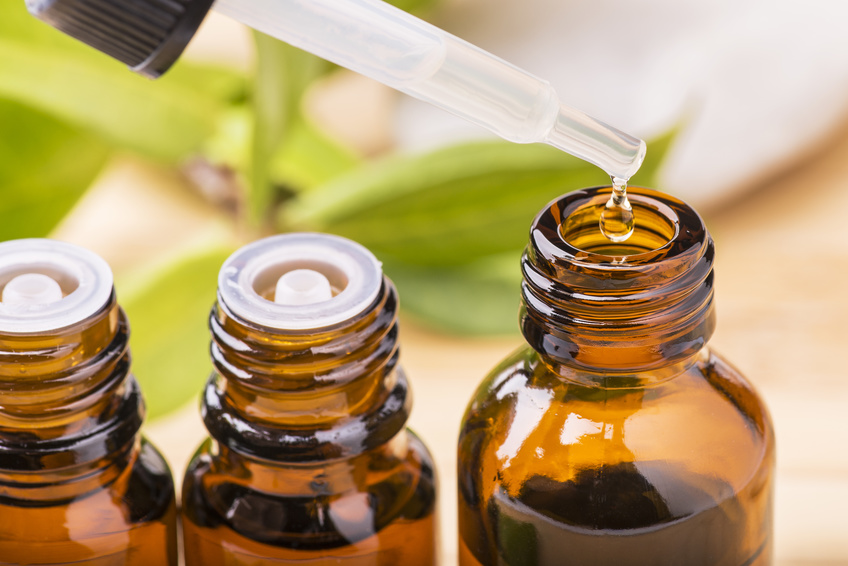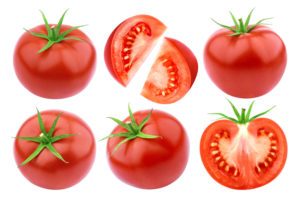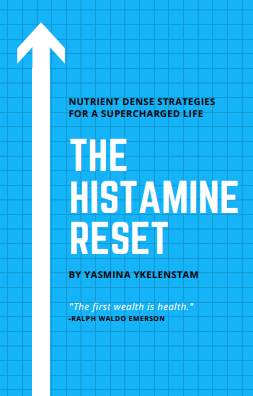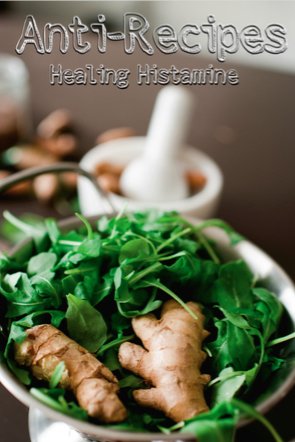
There are so many great antihistamine herbs out there, and I’m always recommending incorporating them into your daily meals and snacks. But what about the essential oils from these herbs? Sure. You can pretty much use the essential oil of an antihistamine herb and derive those same benefits. However, please be careful. Essential oils are super concentrated forms of the herbs and have high levels of their constituents as well… which could possibly be irritating or inflammatory to some people. Check out some of these antihistamine essential oils and proceed cautiously if you should choose to use them.
Please remember those of us with histamine intolerance and mast cell activation can react strongly to pungent smells.
BEFORE YOU START
The nice thing about essential oils is that you can put this antihistamine source into the air by diffusing. Again, be careful before you fill the room with scent. Open a bottle you think you might tolerate and just take a quick sniff (perhaps at a distance) before recapping, to see how you do.
For using topically, be sure to dilute with a carrier oil according to directions or according to your own sensitivity. You can try jojoba oil, olive oil, coconut oil, or add to one of the other collagen boosting oils I mention in this post.
Be really careful if you decide to use these internally. First, make sure you have a quality, pure oil. Second, if the oil has antimicrobial properties (Thyme, for example), keep in mind that you don’t want to be taking full capsules of it and risk killing beneficial bacteria in your gut. This is potent stuff –which means there also may be drug interactions. Do your research.
HOLY BASIL ESSENTIAL OIL
Holy Basil (tulsi) is probably one of my top recommended antihistamine herbs. While regular sweet basil (ocimum basilicum) has some anti-inflammatory effects, the go-to for histamine is definitely Holy basil (Ocimum sanctum). Tulsi essential oil is a little harder to find than regular basil, but it is worth the effort. You can diffuse it (it has a licorice-mint type scent) or use it topically, diluted in your choice of carrier oil. This is a pretty safe essential oil, but it is high in the constituent eugenol, which could be irritating in some people.
LAVENDER ESSENTIAL OIL
Lavender (Lavandula angustifolia). Lavender oil has some antihistamine properties when used topically. An animal study showed lavender inhibits histamine and inflammatory protein release from mast cells. However, some people don’t do well with lavender on their skin. Lavender absolute (an extract using a solvent) tends to be more irritating than lavender essential oil, but it’s probably best to dilute with a carrier oil if you tend to have sensitivities.
THYME ESSENTIAL OIL
Want anti-aging effects? The Egyptians used thyme for embalming. Thyme (Thymus vulgaris) is also a mast cell stabiliser and super delicious. If you choose to consume this one, just use a toothpick inserted into the bottle to get some oil, and swirl the thyme oil into some olive oil to make a dressing. That way you’re getting only a fraction of a drop. Be careful about inhaling thyme. It’s been known to irritate the nasal passageways if inhaled directly from the bottle or the diffuser. This one is probably best used highly diluted. Maybe best applied on the bottoms of your feet.
TARRAGON ESSENTIAL OIL
Tarragon (Artemisia dracunculus) is another mast cell stabilising herb. While you can eat the herb, it’s best not to take this one internally as it’s another highly antimicrobial oil. Diffused (if tolerated), it can lift the mood while providing its services to your mast cells — at least those in your lungs and brain. Tarragon oil can be used topically, but it’s essential to dilute with a carrier oil.
CHAMOMILE ESSENTIAL OIL
Chamomile (Matricaria recutita), as in the tea, dose-dependently inhibits histamine release. Chamomile essential oil is one to really be careful with. Depending on your source, it can be (and often is) adulterated with chemicals. So, you may be fine with chamomile itself, but you could react to the chemical additives mixed in. Quality matters. If you find a good source of it, chamomile oil can be diffused, consumed, or applied topically (diluted as needed).
GINGER ESSENTIAL OIL
Ginger (Zingiber officinale) is a wonderful way to get antioxidants, digestive support, and mast cell stabilising properties all at once. Ginger essential oil should be diluted to use topically. If you are fresh out of ginger… or out of fresh ginger, you can use a couple drops of ginger oil in your soup or stir-fry. A 2006 study found that consuming ginger oil dose-dependently lessened allergic reactions. *Be careful taking it internally if you’re on Warfarin as ginger also acts as a blood thinner.
SWEET FENNEL ESSENTIAL OIL
Fennel (Foeniculum vulgare) is anti-inflammatory, antihistamine, and antioxidant. Fennel oil, in general, is not expensive, and yet it another one that is often adulterated. This oil could have chemicals and synthetics added which could make the oil toxic if you have more allergic tendencies (histamine intolerance). Again, quality matters. Fennel oil can be diffused, applied topically (diluted if needed), or consumed. *Avoid if you have any tendencies toward seizures.
OR JUST EAT THE HERB
If you’d rather not risk the concentrated version of herbs, but still get antihistamine benefits, just add plenty of these herbs to your cooking. Looking for ideas and recipes? I can help. Check out my 28-Day Histamine Reset, where I’ll give you all kinds of delicious recipes, tips, and resources.
————REFERENCES—————
Chandrashekhar, V. M., et al. (2011). “Anti-allergic activity of German chamomile (Matricaria recutita L.) in mast cell mediated allergy model.” Journal of Ethnopharmacology, 137(1), 336-340.
Chen, Bing-Hung, et al. (2009). “Antiallergic potential on RBL-2H3 cells of some phenolic constituents of Zingiber Officinale (Ginger).” Journal of Natural Products, 72(5), 950-953.
Kath, R., & Gupta, R. (2012). Comparison Of Efficacy Of Ocimum Sanctum Against Gastric And Duodenal Ulcers In Animals. The Internet Journal of Gastroenterology. 11(1).
Khair-ul-Bariyah, S & Ahmed, Dildar & Aujla, Muhammad. (2012). Ocimum Basilicum: A Review on Phytochemical and Pharmacological Studies. Pakistan Journal of Chemistry. 2. 78-85. 10.15228/2012.v02.i02.p05.
Kim, H. M. & Cho, S. H. (1999). Lavender oil inhibits immediate-type allergic reaction in mice and rats. The Journal of Pharmacy and Pharmacology, 51(2), 221-226. Retrieved from: https://www.ncbi.nlm.nih.gov/pubmed/10217323
Sridevi, G., Gopkumar, P., Ashok, S., & Shastry, C. (2008). Pharmacological Basis For Antianaphylactic, Antihistaminic And Mast Cell Stabilization Activity Of Ocimum Sanctum. The Internet Journal of Pharmacology, 7(1).
Tisserand, R. (2013). Essential Oil Safety. London, UK: Churchill Livingstone.
Watanabe, Jun, Hiroshi Shinmoto, and Tojiro Tsushida. (2005). “Coumarin and flavone derivatives from estragon and thyme as inhibitors of chemical mediator release from RBL-2H3 cells.” Bioscience, biotechnology, and biochemistry, 69(1), 1-6. Retrieved from: http://www.tandfonline.com/doi/abs/10.1271/bbb.69.1#.VfJc6WSqqko
Zhou HL1, Deng YM, Xie QM. (2006). The modulatory effects of the volatile oil of ginger on the cellular immune response in vitro and in vivo in mice. Journal of Ethnopharmacology. 105(1-2), 301-5. Epub 2005 Dec 9. Retrieved from: https://www.ncbi.nlm.nih.gov/pubmed/16338110













